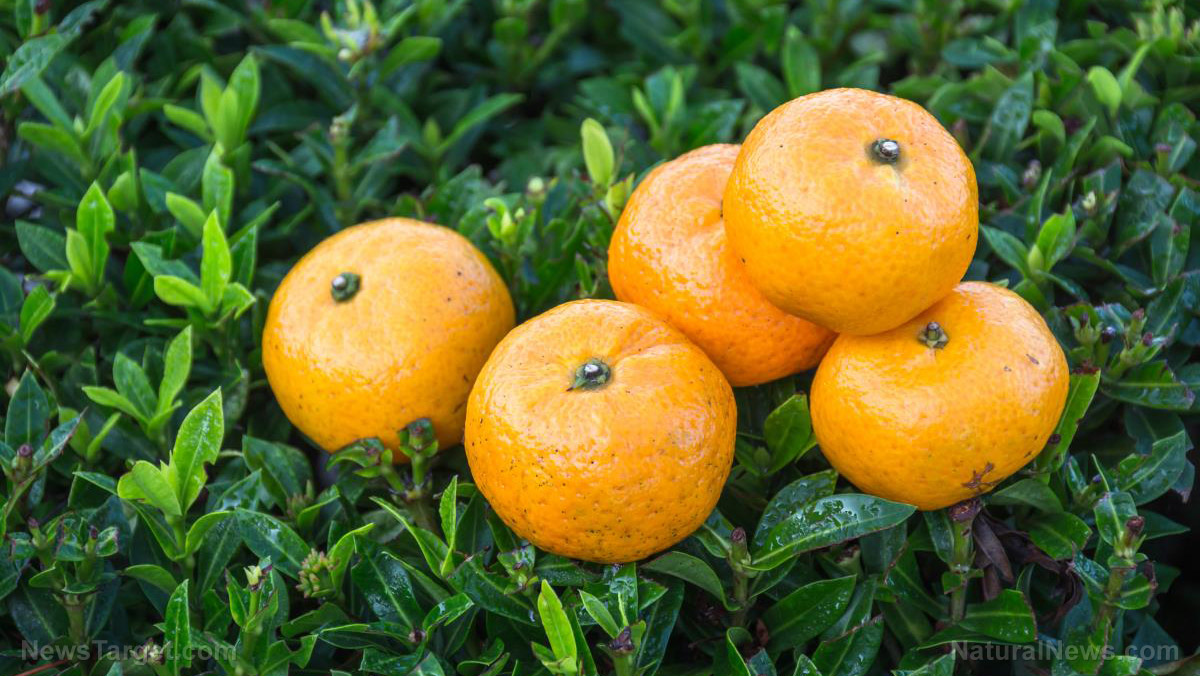Freshly squeezed: Spanish city tapping leftover oranges for its electricity supply
04/18/2022 / By Ramon Tomey

The inhabitants of a city in southern Spain are making use of oranges to produce a different kind of juice – one that powers the entire city. Life gave bitter oranges to the residents of Seville, the capital of Spain’s southern Andalusia region. But instead of throwing them away, Seville residents tapped these oranges as a potential power source.
Originally from Asia, Seville oranges (Citrus aurantium) were first introduced to the country by the Muslim Moors about 1,000 years ago. The orange trees have adjusted to the region’s climate and have grown abundantly ever since. “People say the city of Seville is the world’s largest orange grove,” according to Fernando Mora Figueroa. The head of the city’s parks department added: “[The orange trees] have taken root here: They’re resistant to pollution and have adapted well to the region.”
However, the trees produce bitter fruits that are unsuitable for eating. They are simply left to fall from the tree and rot because of this. Some oranges fall on the streets – where they are squashed by passing vehicles. This causes roads to become sticky, and the juice subsequently attracts flies. In fact, Seville employs around 200 people to clean the streets of juice from the squashed oranges.
To solve this bitter predicament caused by C. aurantium fruits, Seville’s water utility company EMASESA proposed using the fruits to produce power. The resulting power will then be used to run a water purification plant in the city. The pilot test launched by EMASESA used 35 tons of oranges for clean energy – with each ton of orange yielding 500 liters of juice and 500 kilograms of peel.
The company explained how the system will operate: Oranges will be sent to a facility that produces electricity from organic matter, where they will be fermented. As the fruits ferment, they will produce a gas called methane – which will then be collected and utilized to power the water purification plant’s generator. According to the results of the pilot test, one ton of oranges can produce up to 50 kilowatt-hours – which is enough to power five homes for a day.
EMASESA environmental department head Benigno Lopez said the move was “not just about saving money.” He remarked: “The oranges are a problem for the city, and we’re producing added value from waste.” Lopez also expressed hopes that all the city’s oranges will be recycled into energy to power many homes instead of being discarded. (Related: Scientists develop new technology that extracts valuable chemicals from biological waste.)
Squeezing energy from oranges allows Seville to cut down on fruit waste
Seville has around 48,000 orange trees – and all of the fruits from these trees could provide electricity to more than 70,000 homes if converted to power. EMASESA officials said in a statement that they hope to make that dream a reality – but the city would need to invest about €250,000 (US$297,000) for the endeavor.
For now, the oranges will be used to run the city’s water purification plants – ensuring Seville residents have clean water and sanitation. The plants currently consume almost 40 percent of the energy required to keep the city supplied with potable water. The long-term goal is to put back surplus energy generated from the oranges back into Seville’s electricity grid.
Aside from this, the “energy from oranges” project will help the city hit its targets for lowering emissions and become self-sufficient in energy. Seville Mayor Juan Cejas said during a press conference that “EMASESA is now a role model in Spain for sustainability.” (Related: Duke suspends its plans for a new gas power plant and will focus on generating energy from pig waste.)
EMASESA also created a use for the otherwise bitter-tasting fruits with its energy project. The entire Andalusian region produces about 15,000 tons of Seville oranges, but the Spanish do not consume them. The fruits are instead exported to the U.K, where they are processed into marmalade, a common teatime favorite. Seville oranges are also used in making the orange-based liqueurs Cointreau and Grand Marnier. With the endeavor by EMASESA, the city of Seville is guaranteed to eventually reap the sweet benefits of the bitter oranges.
Check out Power.news to learn about fresh new ways of generating energy.
Sources include:
Submit a correction >>
Tagged Under:
Andalusia, Citrus aurantium, electric grid, EMASESA, green energy, methane-powered plant, organic fermentation, power generation, power grid, renewable energy, self-sustainable energy, Seville orange, Spain, water purification plant
This article may contain statements that reflect the opinion of the author
RECENT NEWS & ARTICLES
NewEnergyReport.com is a fact-based public education website published by New Energy Report Features, LLC.
All content copyright © 2018 by New Energy Report Features, LLC.
Contact Us with Tips or Corrections
All trademarks, registered trademarks and servicemarks mentioned on this site are the property of their respective owners.




















